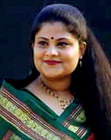
COMPREHENDING THE RAAGA – PART II

We are now going to delve into the origins of the raaga as well as its categorization and classification:
Graama/Moorchana – tried out by knowledgeable musical pioneers in the ninth century. This system rests upon the note and scale of the voice or sound of the musician. There are 3 graamas and 21 in use. Janya-janaka raaga classification denotes a parent raaga facilitating the emergence of a melodic offspring. Thaat classification is the most commonly used theory by practitioners of Hindustani classical music. There are 10 widely accepted thaats in use, out of which most ragas performed by musicians today are derived. They are Bilawal, Kalyan, Bhairav, Bhairavi, Kaafi, Kamaaj, Aasavari, Poorvi, Marwa and Todi thaats. Raaga-Raagini system – this is the most interesting theory with origins in ancient Hindu texts and treatises as also the beautiful and myriad manifestations of the Almighty. Raags in Indian music are personified, considered sacred and given demi-god status and are thus categorized into human-like groups and assigned familial relationships to one another. Raaga-raagini draws a parallel between the dynamic and the static, conveys the balance of male and female in nature. The six principal male ragas are Bhairav, Malkauns, Hindol, Deepak, Shree and Megh. They in turn have their female counterparts, raaginis namely Bhairavi, Dhanashree, Gauri, Maalvi, Triveni, Desi, Vibhas, Kalyaani, Kaushiki, Gandhaari and numerous others. There are many other offspring known as Putra ragas.
Rasa – sentiments, moods and emotions that ragas convey are central to understanding how a particular raaga can stir up unique feelings and create a certain atmosphere. The emotional quality is referred to as ‘rasa.’ Bharata Muni, a sage who lived about 2,000 years ago, authored the much celebrated and revered text on Indian music, dance, drama and other performing arts called ‘Naatya Shaastra.’ This treatise enumerates 9 rasas or emotions called Nava Rasas. They are Shringara (love/eroticism), Haasya (mirth/humor), Karuna (compassion/pathos), Raudra (anger/terror), Veera (valor/courage), Bhayanaka (fear), Bheebatsa (disgust / grotesque), Adbhuta (wonder / amazement) and Shaanta (peace/serenity). For example, Raaga Bhoopali evokes Shaanta rasa while raaga Sarang conveys Veera rasa. Raaga Bhageshree is full of sensual, romatic references of Shringara, Marwa conveys Viraha rasa (an offshoot of shringaara) denoting longing and restlessness of separation from the beloved. The latter two rasas have inspired several compositions in various ragas with Lord Krishna, Radha and Gopikas as central themes.
There are seasonal ragas like Basanth heralding spring, Malhaar performed in the rainy season and many others.
Prahara – An adherence to the time theory in Hindustani classical music is integral to any vocal or instrumental performance even today. There are eight time-cycle divisions in a single day, each of which is known as a prahara. Each chunk of time, day or night, is allotted certain ragas.
Prahara 1, 6 a.m. to 9 a.m.: Hindol, Bhairav, Bilawal, Bhairav, Bhairavi, Lalit, etc.
Prahara 2, 9 a.m. to 12 p.m.: Aasavari, Todi, etc.
Prahara 3, 12 p.m. to 3 p.m.: Sarang family of ragas.
Prahara 4, 3 p.m. to 6 p.m.: Multani.
Prahara 5, 6 p.m. to 9 p.m.: Shree, Purya Shanashree, Kalyaan family of ragas, etc.
Prahara 6, 9 pm to 12 am: Marwa, Poorya, Bhageshree, etc.
Prahara 7, 12 am to 3 am: Malkauns and Kanada family of ragas.
Prahara 8, 3 a.m. to 6 a.m.: Raagas taken from 7th and 1st prahara are performed.
Raagas adopted from South Indian classical music into the Hindustani music repertoire need not follow strict time theories. Some of these are Hamsadhwani, Charukeshi, Salag varali, etc.
Lavanya Dinesh is an accomplished performer and teacher of Hindustani classical vocal music and resides in Tampa. Dinesh, who has three album releases to her credit, also has worked as a music critic and feature writer for Times of India and Deccan Herald. She can be reached at [email protected]